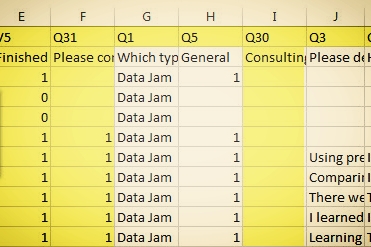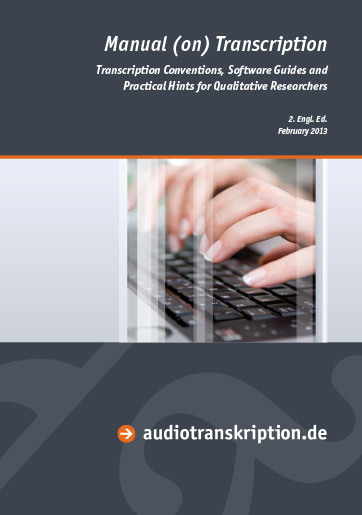In this guide you will learn how to seamlessly import data from Qualtrics into MAXQDA. The guide specifically focuses on data cleanup in Excel, common mistakes, and on import options in MAXQDA. This guide was made in collaboration with Ellen Bechtol, for the Program Development & Evaluation Unit, UW-Cooperative Extension.
In this post, I introduce the moiré effect as a visual device for explaining three tricky and hard-to-grasp aspects of qualitative research: Abstraction, emergence, and the relationship between data and theory.
Coding is easily misunderstood as the ‘basic’ or ‘essential’ function of qualitative data analysis software. In this essay, I discuss how this misunderstanding connects to the technical ease of coding in software; to wide-spread anxiety concerning doing methodologically driven analysis; and to common contexts in which software use is taught.
Grammatically speaking, "coding data" implies that something is done to the data; applied to the data. Data are being coded; they become en-coded. However, qualitative researchers also use the term "coding data" when they describe processes in which they generate codes with, or from data. I think this is confusing. The term "coding data" characterizes one end on a continuum of coding practices: coding as sorting. When we describe how we build or reconstruct systems of meaning by analyzing data it may make more sense to say that we're "data-ing codes".
In this video, I briefly introduce basic differences between questions for qualitative and quantitative surveys, and I discuss how qualitative research strategies can be used as a powerful tool in community outreach programming.
Many thanks to Jay Dampier (UW-Extension, Green Lake County) for recording, producing and publishing the video!
In this brief essay, I explore how research methods are not designed to solve problems - and why that's actually a good thing.
In this guide (PDF), you will learn how to pull a random sample from a CAQDAS dataset, using the random cell function in Excel. Ellen Bechtol and I will introduce this process using MAXQDA11. The process in Excel can also be applied to data from other Qualitative Data Analysis software packages. This guide was produced in the Program Development & Evaluation Unit, University of Wisconsin - Cooperative Extension. Download the guide here from the UW-Extension website.
After looking at my curriculum on question generation using QDA software, Daniel Turner (founder & director of the QDA software company Quirkos) pointed me to a recent article on CAQDAS pedagogy by Silver & Woolf. I was happy to see that the discussion around QDA software and teaching is picking up – and I think the article is a must-read for anyone reflecting on their own teaching strategies and teaching experiences. Daniel asked me whether I think that my curriculum is complementary to Silver and Woolf’s approach. I think it is – so I jotted down a few thoughts.
With this modularized curriculum, participants can generate a question guide for open and semi-structured interviews while actively using basic functions of a qualitative data analysis software. The idea behind this curriculum is to facilitate the meaningful, critical, and task-centered integration of qualitative data analysis software into methodology teaching.
This is a brief intro video on what qualitative data analysis software can do, and what it can't do. It explores the functionality of qualitative data analysis software by distinguishing four main functions: Organization of Data, Annotation of Data, Searching of Data, and Display of Data.
In this series of intro videos, i provide an overview over the general functionality of Qualitative Data Analysis software, the academic discourse around the tool, and I give some hints on choosing the right software for your project.
In NVIVO, paragraph numbers are not visually represented in the software itself. A printout from NVIVO can feature detailed paragraph numbers, but you will not find the same paragraph enumeration in the software. This inconsistency in enumeration is a major drawback for hybrid paper-software workflows. In this guide, you learn how to work around this restriction.
In this guide, you will learn how to prepare time stamps for import into NVIVO. You will also learn how to import documents with time stamps into the NVIVO.
Using PDFs in QDA software is not a new feature, but working with this particular type of file is still somewhat tricky. In this overview I’ll outline general issues with the use of PDFs in QDA software, and I’ll briefly compare import/linking options of PDFs in MAXQDA, NVIVO & ATLAS.TI.
Three elements are at play when
software is used to do qualitative research: Options, Methods, and
Functions. In this post I'll talk about their definitions, how they connect, and when their interplay can create issues for qualitative analysis workflows.
Integrating QDA software into undergraduate methods instruction may seem challenging because another topic is added to already tightly packed syllabi. However, this tool should not be viewed as yet another challenge, but rather as chance to nurture methodological reflection in novices and to provide students with the experience of analysis as a process of decisions.
The guys from audiotranskription.de have compiled a manual on transcription with me - you can download its third English edition here for free (PDF).
My wife Jesse indexed a book recently, and I’ve suggested to try to use MAXQDA. Turns out that the functions of QDA software can be quite helpful for a book indexing project (this guide applies to both MAXQDA 10 & MAXQDA 11). Here’s what she did:
In this guide, I show how Metaphors can be isolated from a text in MAXQDA for further analysis. (This guide is in German)



















In this two-webinar series, I'll show you how to organize Data Jams in your organization, institution or research team. Data Jams are a powerful Research & Evaluation Capacity Building model that focuses on concrete analysis techniques and guided collaborative data exploration, unlike top-down software or methods trainings that are disconnected from the analysts' projects and needs.